Tartu
We travelled to Tartu in Estonia, best known for its School of Semiotics, for the opening of the arts festival ART IST KUKU NU UT organised by Rael Artel and Kaisa Eiche. http://www.artistkukunuut.org/2011/en/
The headline exhibition is Art Must Be Beautiful Selected Works by Marina Abramovic at Tartu Art Museum, a charmingly wonky pink edifice in the centre of town. Vodka shots with pickles were being served outside in the square for the opening; much more conducive to a good night than the icy bins of beer bottles served at London openings.
This concise show, curated by Rael Artel, focuses on her solo works before and after her partnership with Ulay of 1976-88. Artel has boiled four decades of the artist’s oeuvre down to four works for this small gallery. She has chosen to concentrate on Abramovic’s vision of being an artist, her position in society and her critical stance towards the expectations that society generates towards visual art and cultural production as a whole.
The first work, Art Must Be Beautiful, Artist Must Be Beautiful (1975) protests against bourgeois taste in art and the sexist stance towards female artists. In this now iconic work, the artist repeats the title phrase whilst ferociously brushing her hair until she damages herself. The next Role Exchange (1975) documents Abramovic’s performance in Amsterdam where she swapped place with a prostitute called Suze, sitting in her window in the red light district while Suze replaced her at her exhibition opening at De Appel. This work was her shocked response to witnessing the capitalist sale of female flesh in the city, after arriving from communist Yugoslavia. The show then leaps forward to The Onion (1996), the conceptual successor to Artist Must Be Beautiful. In this self-portrait, older and weary of her career as a jet-setting superstar artist, the artist bites into a large raw onion. With nails and lips painted diva red, she continues to eat the bitter vegetable as tears stream down her face. She laments her life of constant passport checks and gallery openings, of always falling in love with the wrong men. Perhaps these tears are cathartic and cover real tears of unhappiness. She appears to be half flaunting her enviable lifestyle, half mocking herself.
Abramovic’s national and family history are evoked in the final work, The Hero (2001), her self-portrait as an equestrian monument. Whilst the Yugoslavian anthem plays, she sits nobly poised astride a white horse, gripping a white flag fluttering in the wind; is it white for surrender, for peace or to project one’s own ideology on to? She is also returning to her own primal scene. Her parents met fighting as partisans during the war and her father was celebrated as a war hero.
The exhibition at the Y Gallery, Leaving Tartu was the result of an open call won by four young artists Anna Hints, Marja-Liisa Pats, Eva Labotkin and Toomas Thetloff. The exhibition reflects on the difficulties and rituals of departure and all the works are collaborations between the artists. They include a video of a girl running on the spot in a futile but humorous attempt to escape artu – represented by a large concrete sign. Clocks cover the walls, ticking life away, footsteps echo and a door slams. A real bus stop has been placed outside the gallery and an electronic schedule lists up-to-the-minute information on all buses and trains leaving Tartu. In another part of the gallery you queue to enter a series of pitch-black rooms. Then the door locks behind you and you must find another way out. After wondering up and down a staircase of locked doors we eventually discovered an exit through a courtyard at the back.
The theme of exodus continues in Acts of Refusal at Tartu Art House, curated by Ellen Blumenstein & Kathrin Meyer. A sign by Libia Castro and Olafur Olafsson outside the gallery declares (in Estonian) Don’t Believe the Truth. The show seeks to address the post-socialist condition and looks at productive acts that shake up existing structures and render them visible. Leaving and escaping the past seems to be difficult. In Laura Toots’ glossy film Turnaround an aeroplane builds up to take-off but our desire is then frustrated when the engines are switched off again. In Estonian Dreams Flo Kasearu presents us with the blog of a young Estonian texasgirly1979 living in Texas. She is a walking cliché who films herself talking to her pets but she also takes a keen interest in a group of Estonian bikers kidnapped in Lebanon. In the middle of the gallery is a little hut, which you climb into to watch Eva Labotkin sleeping in a bed in IKEA, turning public space private. In Jos de Gruyter and Harald Thys’s disconcerting video The Mud of Branst an underground studio is inhabited by strange people only able to communicate with each other through the clay figures they are making.
The Norwegian artist collective Ytter www.ytter.no from Bergen took over the Noorus Gallery for several days, arranging presentations, an exhibition and a hangover brunch. They introduced a range of interesting guest speakers. These included fellow Norwegians Steffen Handlykken, who introduced his space 1857, housed in a former lumberyard in Oslo, and Marie Nerland, curator of Volt in Bergen. Alongside them were young curator Neringa Cerniauskaite from Vilnius, Lithuania and Swedish artist Roberto N Peyre, who talked about the interventions he curated at the Ethnographic Museum of Stockholm’s Voodoo exhibition. Discussions continued in the evenings at a variety of establishments around Tartu, artvehicle’s favourite was the basement bar Möku.
Rael Artel, our host in Tartu is a De Appel-educated curator, who produces outstanding exhibitions from a farmhouse in the Estonian forest. Last year she curated Let’s Talk About Nationalism! Between Ideology and Identity at KUMU. http://www.publicpreparation.org/2010/lets-talk-about-nationalism/
This year she is in the middle of her travelling cycle Your Centre is My Periphery which examines ambivalent aspects of life in former Eastern Europe and its neighbouring regions. It started with Lost in Transition at the Contemporary Art Museum of Estonia in Tallinn this summer and continues currently with After Socialist Statues at KIM? Riga, Latvia and Life in the Forest at Galeria Arsenal, Bialystok, Poland.
Tallinn
The occasional strip bar and English stag party cannot detract from the beauty of Tallinn’s medieval centre. In the Estonian capital people are friendly, the food is great, cider is sweet and the loos are unisex.
For a sensitive introduction to Estonia’s history during the Second World War and Soviet times visit the Museum of Occupations. Each carefully chosen artefact tells a story and in the basement is a capsule collection of displaced Soviet-era statues. A visit to the museum offers an oblique insight into the current anomalous position of ethnic Russians in Estonia. To step further back in time, visit the Niguliste Museum, a restored medieval church filled with beautiful carved tombstones and paintings including the macabre masterpiece The Dance of Death which reminds us of the transience and vanity of earthly power and riches.
Tallinn’s striking art museum KUMU is located in the beautiful surroundings of Kadriog Park, which was sumptuously transitioning to autumn as we visited. http://www.ekm.ee/kumu.php Alongside its collection of Soviet era Estonian art, aptly titled Difficult Choices, it houses a series of temporary exhibitions. Fascinating stage props and documentation from Tadeusz Kantor’s happenings of 1960-75 are currently on loan from Krakow. On the top floor is the stimulating exhibition Gateways: Art and Networked Culture. The exhibition explores the fundamental economic and social changes network technologies have led to in an unusually engaging way. Laptops and smart phones offer constant connection to a globalised digital network of data that overlays our reality like a second skin and influences our perception of the real objects surrounding us, melding real space and virtual space. The works here by international artists explore how this impacts on our actions, development, perception and experience of the world. The show highlights how the Internet affects our privacy, relationships and security, how we experience events and how our image and personal data is recorded and disseminated. As well as exploring how our attention span is being sapped, breeding a superficial engagement with multiple news stories. It also considers how the Internet can promote tolerance, help us to find like-minded people and create fantasy scenarios and consumer choice. Apparently Estonia, like Finland and Spain has declared access to the Internet to be a legal right for its citizens, there certainly seemed to be wifi everywhere, including on the coach from Tallinn to Tartu. http://www.goethe.de/ins/ee/prj/gtw/enindex.htm
In contrast to KUMU’s purpose-built modernist art palace, the Contemporary Art Museum of Estonia [EKKM] is cunningly disguised as a derelict sea-front factory with an enormous chimney and a strange diagonal brick passageway, once used for transporting coal. Darkness, Dark, curated by Anders Härm takes Johannes Saal, an Estonian Expressionist painter as its inspiration. This painter went mad after a Soviet crackdown on artists to enforce a Socialist Realist style. One of his well-known paintings features his wife hanging herself. This archetypal tortured artist has now been returned to the canon in Estonia. The incredibly eerie EKKM building is well used by Härm who fills it with disturbing works by Estonian artists including Marko Mäetamm, Kirke Kangro and Ene-Liis Semper. http://ekkm-came.blogspot.com/
Afterwards, recover your equilibrium at nearby Kohvik Moon, a lovely Russian-influenced restaurant which serves the most delicious salmon roe blinis I have ever tasted. http://www.kohvikmoon.ee/index.php?page=3
The existential angst continues at Tallinn Art Hall in Vabaduse Square with Continuum_the perception zone. This polished exhibition is curated by Goldsmiths-educated Estonian Maria Arusoo. In the show, space itself is rendered, not only visible, but palpable and substantive. She has selected works which alter atmospheric conditions so the invisible becomes visible and the absent becomes present. They include Martin Creed’s Work No 227 The Lights Going On and Off and Olafur Eliasson Your uncertain shadow (colour) which relies on the viewer’s participation. Their shadows become multiplied in the colours of the rainbow and the viewer becomes a delighted experimenter testing his fixed perceptions of light. In Twenty-six Drawing and Falling Things the deadpan, black-clad duo, John Wood & Paul Harrison use their own bodies as sculptural materials. Evoking Laurel and Hardy as much as Vladimir and Estragon, they perform scenarios that test the laws of physics in a neutral white box. My favourite is one where they gently slide around on office chairs as you gradually realise they are being buffeted about in the back of a van. http://www.arusoo.org/
http://www.kunstihoone.ee/index.php?lang=eng&club=1&page=3
Marko Mäetamm has a studio in the same building, we popped in to see what he has been up to, you can do so here: http://www.maetamm.net/index5.html
Helsinki
From Tallinn several ferries a day take you across the Baltic Sea to Helsinki, although the crossing can be very stormy at this time of year as we discovered. In the Finnish capital we visited Kiasma, the beautifully-designed contemporary art museum. Their current exhibition of contemporary art from Africa ARS 11 was sensitively-curated and felt much more deeply considered than the last such survey I saw, Africa Remix at the Hayward Gallery in 2005. Kiasma’s comprehensive exhibition features 300 works by 30 artists, mostly living in Africa or of African descent and addresses issues of migration, environmental problems, urban life and cultural stereotyping. In my opinion it succeeds in its stated aim of producing new understanding on the situation in today’s Africa and extending the idea of African contemporary art. Two works particularly stayed with me. One was a film by Alfredo Jaar, a sobering accusation that Bill Clinton knew about, and failed to act on, the genocide in Rwanda. The other was Benin artist Romuald Hazoumé’s series of masks, which at first appear to be the archetypal ‘African masks’ beloved of modernist artists but are in fact pastiches made from plastic oil containers, the refuse of consumer society.
Ali MacGilp
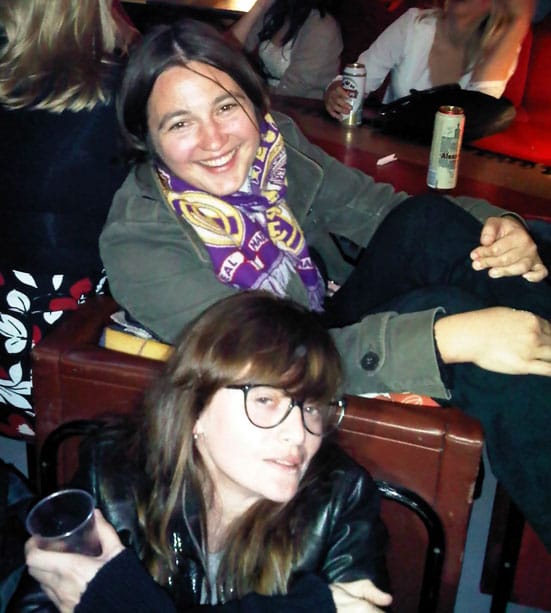
ART IST KUKU NU UT organizers Rael Artel and Kaisa Eiche
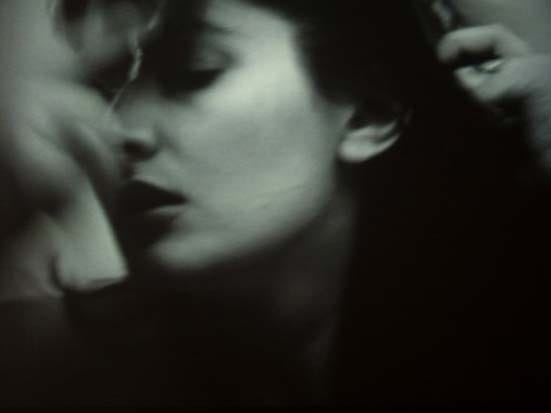
Marina Abramovic Art Must Be Beautiful, Artist Must Be Beautiful (1975)
installed at Tartu Art Museum
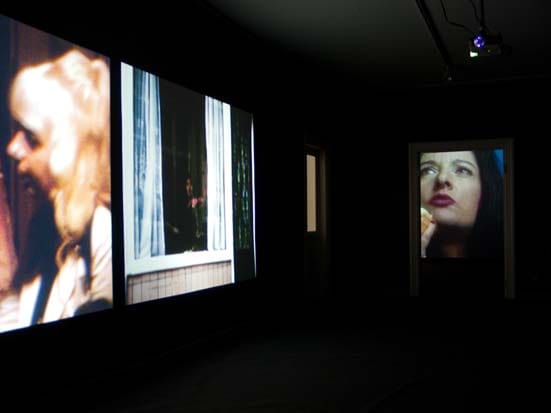
Marina Abramovic Role Exchange (1975) and The Onion (1996) installed at Tartu Art Museum
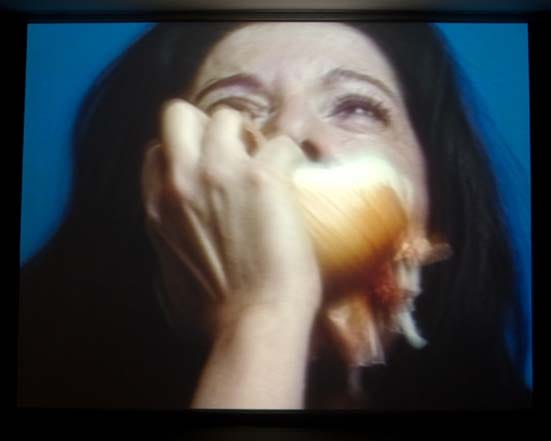
Marina Abramovic The Onion (1996) installed at Tartu Art Museum
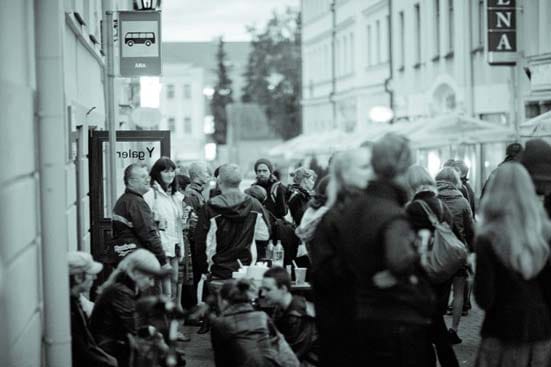
Opening of Leaving Tartu at Y Gallery, Tartu, September 2011
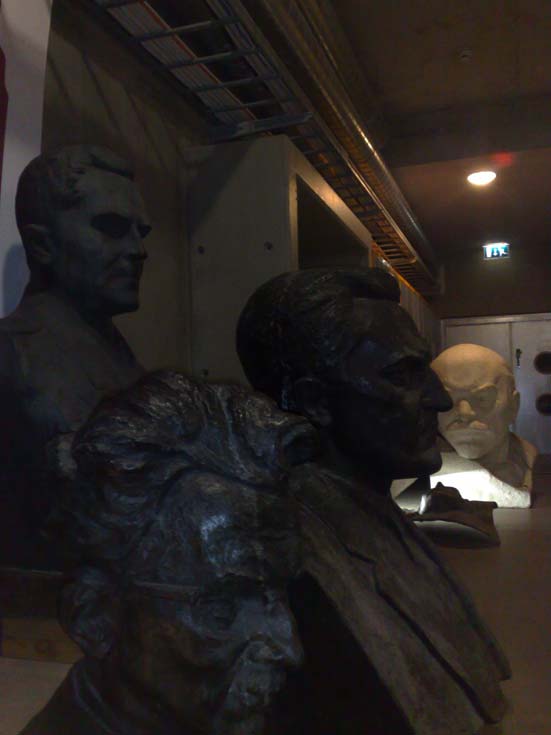
Basement of The Museum of Occupations, Tallinn
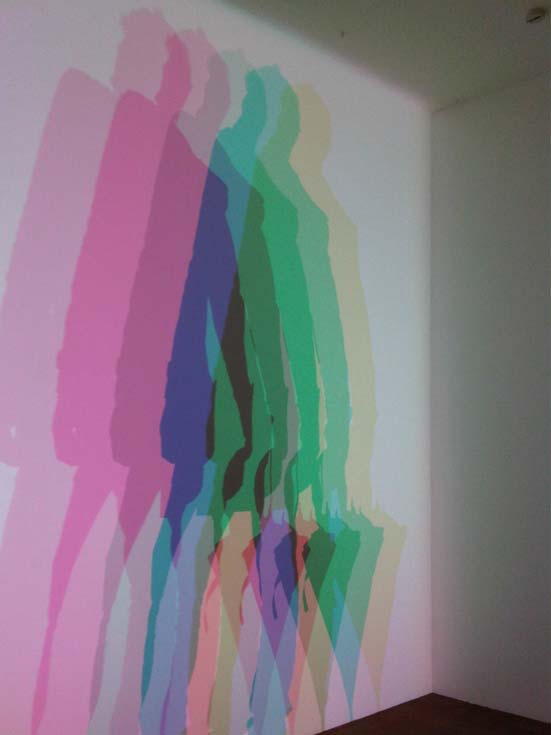
Artvehicle’s Adrian Lee interacting with Olafur Eliasson Your uncertain shadow (colour) (2010) installed in Tallinn Art Hall
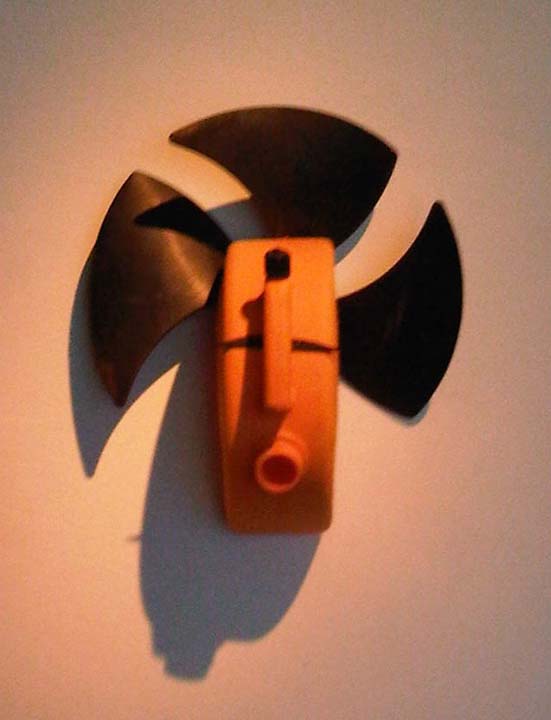
One of a series of masks by Romuald Hazoumé installed at Kiasma